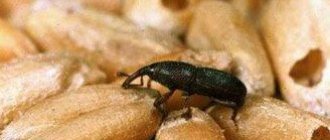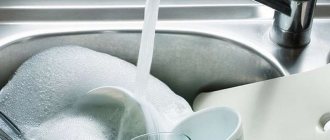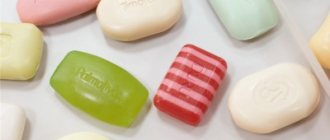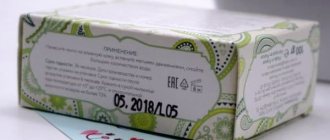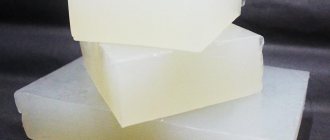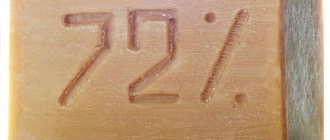Since childhood, I have had the habit of washing my hands with soap after going outside, before eating, after playing with pets. Most often, solid toilette is purchased and used in bars. And everyone has encountered the problem when a piece is already too small, it is inconvenient to clean their hands and it simply goes into the trash. But if you add up all the remnants that are thrown away every month by each family, this is a large number. We will tell you where to use soap remnants at home.
New bars and soap balls
Before you begin, the remnants need to be thoroughly dried. This way they will not become moldy and will be suitable for use.
To make scented balls from leftover soap bars, follow these steps:
- grate the soap;
- add a few drops of warm water to make the chips more pliable;
Making soap from soap remnants
- form small bars or balls;
- leave to harden (the resulting products can dry for several weeks).
Ready-to-use balls can be placed in your car or closet as a fragrant sachet. To make the smell even brighter, add a couple of drops of essential oil to the mixture.
Another option for preparing a new bar is as follows:
- the remnants are sorted by smell and color, crushed and heated in the microwave;
- add a little water;
- form a bar that is suitable for use in baths and showers.
If there are a lot of different soaps in stock, they are combined and soap is obtained, which is suitable for use for household purposes.
Various additives to soap composition
When creating a popular hygiene product, ingredients are added that will affect the composition, color and smell of the soap.
For those who want to improve their skin condition using the finished product, you can additionally use the following ingredients:
- Coconut flakes. Performs a scrubbing effect that affects the skin of the hands and body. Coconut flakes can be replaced with poppy seeds, coffee or chopped almonds.
- Essential oil. Gives the soap a pleasant smell. They use peach, almond, and eucalyptus. Tea tree oil moisturizes the skin. Most essential oils are sold in specialized stores where you can find shower and bath products.
- Granulated vitamins. They have a beneficial effect on the skin, nourishing and toning. Vitamins A or E are added.
- Chocolate drops. They will give the hygiene product a pleasant aroma and act as a nutritional supplement.
- Chamomile and calendula solution. This supplement can eliminate inflammation on the skin, which is necessary when allergic reactions occur.
Changes in the color of the product are achieved using dyes. It is not necessary to use artificial ones - you can replace them with natural ones: beet juice, spices, curry or cinnamon.
Soap made from colorful pieces
2-in-1 washcloth
There are washcloth pockets made from sisal on sale. You can also sew the product yourself from a terry towel. It is important that the washcloth has a pocket where the soap remains are placed. When exposed to water, the pieces inside foam and cleanse the skin.
Washcloth
It’s interesting that old soaps are sometimes put into tights or simple washcloths and used in the country. After working in the garden, just wet your tights, which contain soapy residue inside. This also saves time, because hands are washed and soaped immediately. Also, ordinary soap will not get dirty due to the dirty hands of summer residents.
Interesting: Removing a blockage in the bathroom yourself
Where to apply leftover soap?
An excellent solution for disposing of soap residue is to make a washcloth.
Leftover soap, where to apply:
- For these purposes, you need to sew a washcloth that resembles a bag in shape. In this case, it is necessary that there is sisal fiber on both sides. Place the remaining soap in a washcloth.
- When it gets wet, a large amount of foam will form. It is this foam that can be used for cleaning or washing.
- With such a washcloth, you can use several bars of soap and save time on preparing various balls or liquid detergent.
Slicing machine
Liquid soap
Interestingly, liquid soap is made from soap remnants. The longer the waste is stored, the more water will be needed to melt it.
Soap bars dissolve in water. It is also recommended to consider other alternatives, such as aromatic tea. The resulting solution is stored in a bottle and used as liquid soap or laundry detergent. This is especially true for clothes made from soft fabrics that are hand washed.
There is another option for preparing liquid soap, for which you need to follow these steps:
- Grate the collected remnants or chop them with a knife;
- place in a container and fill with hot water;
- seal tightly and leave for several days;
- shake the liquid and open it;
- pour in 1 tbsp. l. lemon juice and a couple of drops of essential oil;
- To soften the skin, a little glycerin is often poured in.
Another option is to use soap remnants in the toilet tank. To do this, the residues are placed directly into the tank. During draining, foaming and aromatic water is obtained. In addition to the pleasant smell, there is another plus - additional disinfection of the toilet.
Flush cistern
Soap pie recipe that everyone can make
So, let's first of all figure out which components are useful to us.
- Colored remains are small. You can add color to them using food coloring or natural additives. Such as beets, turmeric, carrot juice, cocoa.
- Empty container.
- A bottle with a spray for alcohol.
- Pots, bowls.
Let's move on to creating the pie:
- We chop brightly colored soaps into pieces of different thicknesses.
- We melt the neutral pieces in any convenient way, as described above.
- Let cool for about forty minutes.
- Grease the container with oil.
- Lay out the colored pieces. Sprinkle with alcohol.
- Pour in liquid soap. It should be cool so as not to melt the colored parts of the cake.
- The final touch is to spray with alcohol. Let it harden.
Remnants as a flavoring agent
The remaining soap is dried and placed in a fabric bag. It's best to put it in a closet with things that won't be used in the near future. Closed clothes that lie motionless in the closet lose their smell of freshness. And fragrant remnants will help correct the situation. The method is also relevant for cabinets with towels and bed linen.
Interesting: How to build a summer shower for your dacha yourself
Useful money saving
As you can see, reusing leftover soap can save you a lot of money. In addition, you have the opportunity to choose the shape of the new soap and its aroma yourself: the more unusual and varied the initial ingredients, the more original and unique the final result will be. Another undeniable advantage is that handmade soap will not contain harmful substances, parabens and other impurities. This is especially important if you suffer from allergies.
Soaps as first aid
Interestingly, soap residue is often used for first aid. For example, soap can relieve pain after a burn. Of course, we are talking about a mild household burn that you can get while preparing food. The burned area is carefully lubricated with soap.
Laundry soap remnants, as well as toilet soap remnants, will help in the following cases:
- If you treat the bruise with a soap solution for several days, the swelling will go away;
- Cotton swabs soaked in soapy water are inserted into the sinuses to relieve a runny nose.
Soaps will also help for cosmetic purposes. They are very effective in combating problem skin. Teenagers often face this problem. But if you regularly apply a mask consisting of salt and soap suds to your face, you can restore your skin to a healthy appearance. Keep the mask on the face for up to half an hour, after which it is washed off with warm water. For good results, the procedure is done for two weeks every 2-3 days.
Preparing soap-scrub
This product will become a guest in the bathroom. You can surprise your loved ones and friends with such a gift. What to do with it you ask? The scrub exfoliates dead skin particles, rejuvenates and refreshes it. Makes the epidermis softer and smoother. We improve blood circulation by rubbing particles from the scrub.
What fillers should I use? Perfect for: ground coffee, coarse salt, sugar, oatmeal, raspberry or strawberry seeds.
The initial stages of manufacturing can be seen a little higher. First of all, you grind the soap, heat it in a way convenient for you, and at the moment of pouring the finished product into molds, add the selected filler to it. It’s better to stop at one of them, not to mix anything.
Leave it in the shade until it hardens and wait a couple of days.
Removing paint from glass
Are there paint stains on the mirror or glass? It is enough to soften the soap remnants to clean glass surfaces. To implement the method, you need to prepare 4-5 strips of paper, each 5-6 cm wide. They are smeared with soaked soap and glued to the stains that are on the glass. After a short period of time, clean the surface of soap, paper and paint.
Tips for Beginners
Those who decide to make soap for the first time should consider the following key points:
- During the cooking process, you need to take care of the respiratory tract, and it is better to get a special mask or respirator. This will protect the body from the effects of toxic fumes.
- It is not recommended to add a lot of essential oil. This is explained by the fact that the essential oil is produced in a highly concentrated form. At first the smell is not noticeable, but after the product cools down, the effect will be obvious. The maximum amount of oil added to each container of future soap is no more than 10 drops.
- If natural ingredients are added to the mixture, then it is worth remembering that the shelf life will be reduced.
- It is better to use molds made of silicone. They are intended for both baking and soap making.
- You can thin a mixture that is too thick with a little water.
- If the mixture is too thin, a few teaspoons of sugar will add thickness.
- Old remnants are easier to grind with a hammer. The remnants are covered with a towel to prevent them from scattering.
Thanks to these tips for making soap, the process will be faster and easier. Thus, you will get an original product created with your own hands. Soap can not only be used independently, but also presented as a gift.
What soap is best to use?
Making soap from old scraps is most often the first step in the art of soap making. Those who enjoy this procedure later turn this hobby into a serious hobby and even one of the ways to earn a stable income.
At the initial stage, fragments of old unused soap are quite suitable. According to knowledgeable needlewomen, the best source here will be the remnants left over from a product intended for children. Children's soap does not contain unnecessary additives, coloring pigments or perfumes, which provides novice soap makers with ample space for creativity.
If you use the remaining pieces of colored and perfumed toilet soap for work, you should take into account that the result may be unpredictable. Mixing remnants of different shades and aromas often leads to the fact that the final product ends up very different from expectations.
Preparation
At the preparatory stage, it is necessary to stock up not only with a sufficient number of old remnants, but also with a set of available tools and equipment. Thus, the following are usually used as auxiliary tools for a beginning soap maker:
- utensils for mixing soap remnants and melting them;
- set of molds for hardening;
- grater;
- a stick or spoon for mixing the soap mass;
- auxiliary ingredients.
The utensils for preparing the stock can be plastic or glass. To melt soap remnants, it is better to use an enamel pan or stainless steel bowl.
It is recommended to use children's sandbox sets made of durable plastic as molds for hardening. Soap frozen in a silicone mold for making cupcakes or tartlets will look no less original.
A grater is one of the main tools of a soap maker. However, in its absence, it is not forbidden to use a kitchen or carpenter’s hammer. In this case, the soap remnants should be placed in a tight bag before grinding.
Many inexperienced soap makers, just starting to master such an original hobby, willingly experiment with various auxiliary ingredients. Their list is very extensive and varied. These can be basic and essential aromatic oils, birch tar, milk, coffee grounds, cocoa, and decoctions of fragrant herbs. However, experienced soap makers do not recommend getting carried away with additional components. At first, it is enough to make a few mistakes in calculations in order to later lose interest in soap making forever.
Country soap
All summer residents know how many problems arise with soap lying on the street. A strong wind knocks over the soap dish from time to time; debris falls from the branches and sticks to the wet piece; When washing, the bar often slips out and falls straight to the ground. We want to offer you a method that will help solve all your problems at once.
Place soap in a nylon sock or stocking and tie it in a knot. Hang the resulting device in the area next to the washbasin or water tap. Wet it - wet soap will foam beautifully, but will never slip out of your hands.
Not just soap!
As you can see, you can soap for a long time! But this is not the only way that remnants can help out.
When sewing
The most traditional way is to use soap instead of tailor's chalk . Soap lines erase perfectly, so there will be no marks left on the fabric at all.
For those who don’t like hand sewing and pick up a needle to mend a hole in a sock, you can make a pincushion . And the needles are stored in one, completely safe place, and are better stuck into the fabric.
For lubrication
For men, soap remnants are also useful; with their help it is better to tighten all kinds of screws and lubricate the grooves of drawers.
Small pieces of soap will also come in handy if the zipper on your clothes isn’t fastening well . All you have to do is run it along the links of the fastener, and the problem is solved.
For aromatizing the air
An excellent scent for bed linen or suitcases can be made from pieces of expensive scented soap. When using such a fragrance, you can safely say to mustiness: “Goodbye!”
Important! Moths do not like soapy “spirits,” so this flavoring is also useful for fighting this insect.
By the way, the nearby insects will also not be happy with such a neighborhood, so you can safely leave the remnants on the windowsill.
Garden plants will also thank their owners for such a gift. After all, most pests will try to move from them to a more comfortable place. So we put the odorous pieces in rag bags (or old socks) and hang them on trees and bushes.
Safety regulations
Description of volnushka mushrooms and features of use, can they be eaten?
Most recipes for making soap from leftovers involve heat treatment of the workpiece mass. Regardless of whether the soap mass will be prepared on gas, an electric burner or in a microwave oven, the soap maker must comply with all safety requirements, which require competent work with red-hot and hot objects.
Increased caution should also be observed when working with essential aromatic oils. Their concentration is so strong that it can cause a chemical burn.
For this reason, it is also recommended to wear protective gloves when working with essential oils, avoiding their contact with the skin and mucous membranes.
It is strictly forbidden for people suffering from allergies to experiment with essential aromatic oils. Inhaling the aromas of such oils can not only provoke a spasm and an attack of suffocation, but also cause a severe allergic reaction.
Epilogue
Making soap from pieces that could only be thrown away is a definite saving, especially considering the rising prices for a quality product. Here you have the opportunity to make soap of exactly the quality and aroma that you need. The result is a custom-made product, for which you would have to pay a tidy sum in a private soap factory. Also, do not forget about aesthetics, because you can find completely different forms. Well, friends and acquaintances will no doubt be pleased with an exclusive gift of this kind.
Previous DIY HomiusDigitization of old videotapes: equipment, software, work order Next DIY HomiusMini garden in a bottle: how you can use recyclable materials for good
